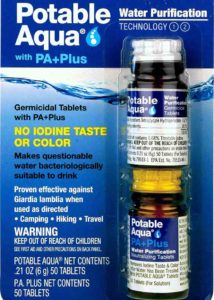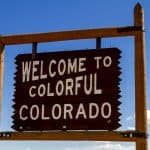Sleeping Bags and Tent Shelter
Tents can be purchased cheaply at your local camping store or online. Even Walmart will have a small selection of camping tents that are fine for first-time campers. We can also rent camping tents and gear at a store like REI from $25-$75 per day. I don’t recommend buying an expensive tent for the first few times you go camping as your needs and wants will change.
It would be a shame spending a lot of money only to find the tent doesn’t fit your needs. The more you camp and hike, you might find a style that fits your needs better. Also, you’ll end up with a few different tents depending if you camp with different people or have kids to go camping with you.

Sleeping Bags
Sleeping Bag Temperature Ratings
When looking at a sleeping bag, check the ISO rating for the temperature rating on the bag. This rating represents lap tested temperature results for all brands.
Do note that these ratings are for adults only, and there’s no rating and testing for children and babies.
Sleeping Bag Comfort Rating
This indicates the lower limit of the comfort range. Comfort rating is a sleeping bag user with a relaxed posture, such as lying on their back, is in thermal equilibrium, and is not feeling cold.
Sleeping Bag Temperature Limit
Lower limit at which a sleeping bag user with a curled up body posture is globally in thermal equilibrium and just not feeling cold.
Sleeping Bag Extreme Temperature
The lowest temperature where the risk of health damage by hypothermia is possible.

| Bag Type | Temperature Rating (°F) |
|---|---|
| Summer Bags | +35° and higher |
| 3-Season Bags | +15° to +30° |
| Winter Bags | +15° and lower |
Sleeping Pad
This is a subject all on its own, but I included it here because the sleeping bag and sleeping pad work together.
The pad is a crucial part of the pair because a sleeping bag alone won’t provide enough insulation. There are a few different types of sleeping pads, and just like bags, you’ll choose from a balance of comfort, weight, and insulation.
Manufacturers use R-Value to measure the pad’s ability to insulate you from the cold ground. It’s the measure of thermal resistance the pad has. The higher the R-Value, the more effective the sleeping pad is.
Types of Sleeping Pads
Air Sleeping Pads
You blow air into them or use a small air pump. These are comfortable, lightweight, and roll up to a small size. They come in a wide range of insulation for winter or summer camping. The higher R-Value pads have extra layers in them.
One big downside is air sleeping pads can be punctured easily, so you’ll have to watch out for sticks and sharp rocks. They should all come with a small repair kit you can keep in your hiking backpack for a quick fix.
As a side sleeper, I find air pads uncomfortable, my hips tend to hit the ground, and the ones I’ve tried have been noisy and crinkly; waking me up as I move.
Self-inflating Sleeping Pads
Also called open-cell foam pads. They use open-cell foam that has an open-core construction. This allows the air to sit inside. As the pad unrolls, it “self inflates,” although you’ll still need to blow some air in it to top it off. Just like the air sleeping pads, they can be punctured, so keep your repair kit handy.
The self-inflating pad is the one I use when I’m camping. Costs are reasonable; they’re comfortable and provide a lot of insulation.
Foam Sleeping Pads
These are the large foam pads you see strapped to the exterior of hikers backpacks. They are rolled or folded and don’t need to be inflated so that they won’t get punctured. These pads can take a beating and are great for the person that doesn’t want to worry about their sleeping pads popping.
Another great thing about them is that they are always ready for a quick break. With no setup and their durable nature, you can lay or sit down anywhere.
Camping Grill and Food
I love my Jetboil for how quickly it heats up water and the fact that it’s never blown out, even in high winds. I take it with me camping every time, and after showing it off, I’ve convinced a few people to purchase one themselves.
The Jetboil is more of the solo hiker that’s concerned with weight and only cooking for one or two people. Check out the current price of the Jetboil on Amazon here.

When camping with a few people and weight isn’t a concern the Colemen Dual Burner Stove is a popular choice. Both the burners are adjustable with a clamshell design.
When opened and the back is used as a windscreen. See the current price of the Colemen Dual Burner Stove on Amazon here.
I deep dive into backpacking camping stoves if you’re looking for a small foldable stove.

As for food, keep it simple for the first few times camping. Hot dogs, hamburgers, cheese, and crackers. In the morning, oatmeal and coffee is always an easy breakfast meal. Tortillas with salami and cheese for lunch is a favorite of mine as well.
Freeze-dried camping food has come a long way. Mountain House makes some of the best food pouches. These are lightweight at 4.8 ounces and are easy to prepare. Just add some hot water then let it sit for a few minutes. Chili Mac with Beef is one of my favorites, but they have many flavors to choose from. Check out all the flavors of Mountain House they have on Amazon here.

Lighting for Your Campsite
You’re going to have to bring some lighting for after dark. A campfire will provide some light, but it’s not enough when looking into a bag or trying to find your lip balm in the tent. You probably already have a flashlight or two, but a headlamp will keep your hands free.
This is nice when digging into a backpack for looking for more firewood. Battery operated lanterns are safer than gas lanterns and will last for hours.
Large Hiking Water Container
Camping Rope
Waterproof Dry Bags
The Rest of These Things Don’t Need Much Explanation
- Comfortable shoe sandals for sitting around the camp
- Medical kit
- Folding camping shovel
- knife (I Prefer a fixed blade, but that’s optional)
- Tarp to lay your tent on
- Small Folding table
- Multi-tool
- Duct tape
- Camping and Hiking Cooler
Always tell someone where you’re going, what trails you’re using, and when you plan on being back!
If you can think of some stuff I missed for the first time camper, let me know in the comments.
Check out our Ultimate Guide to Hiking backpacks here.










